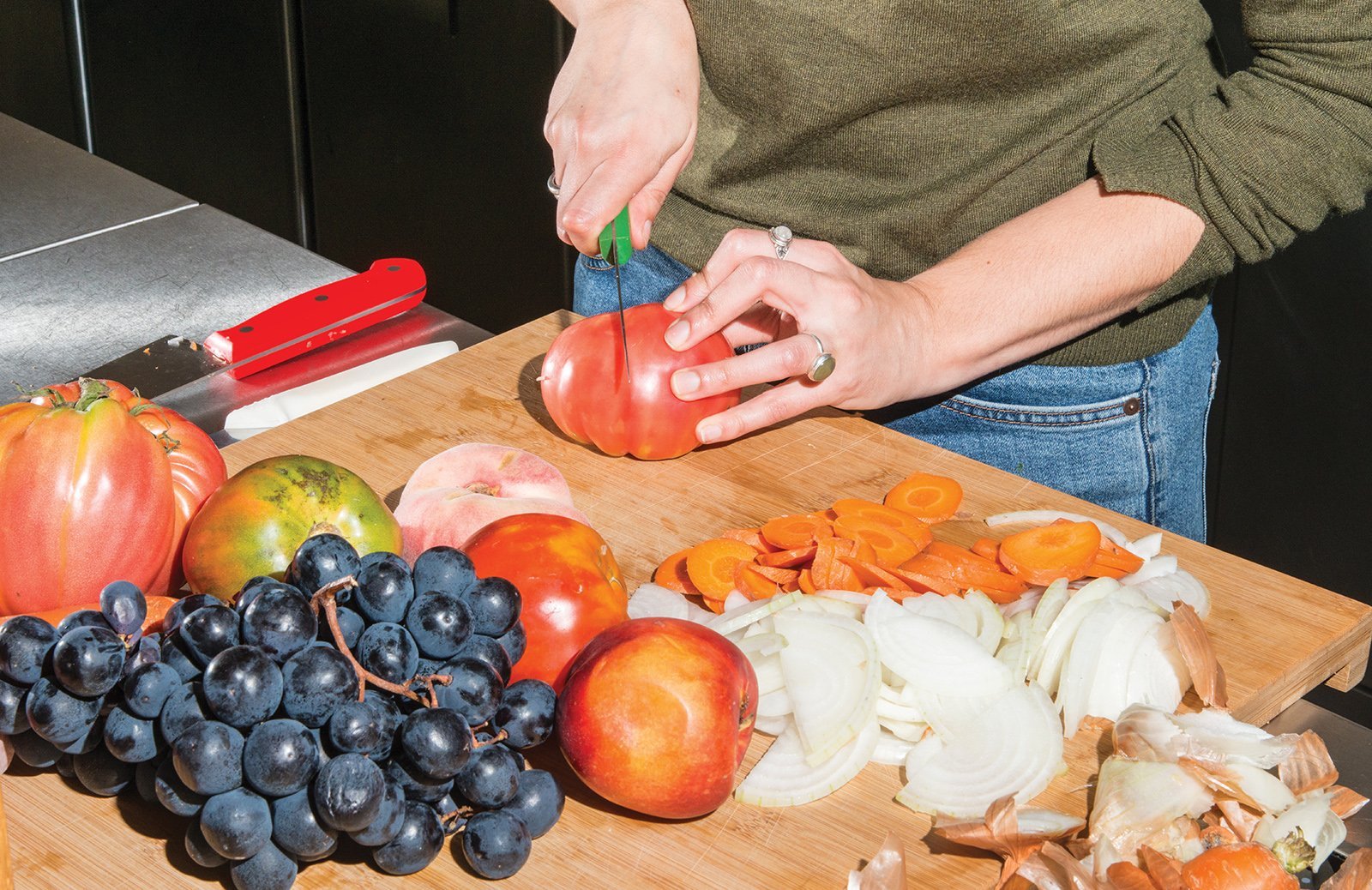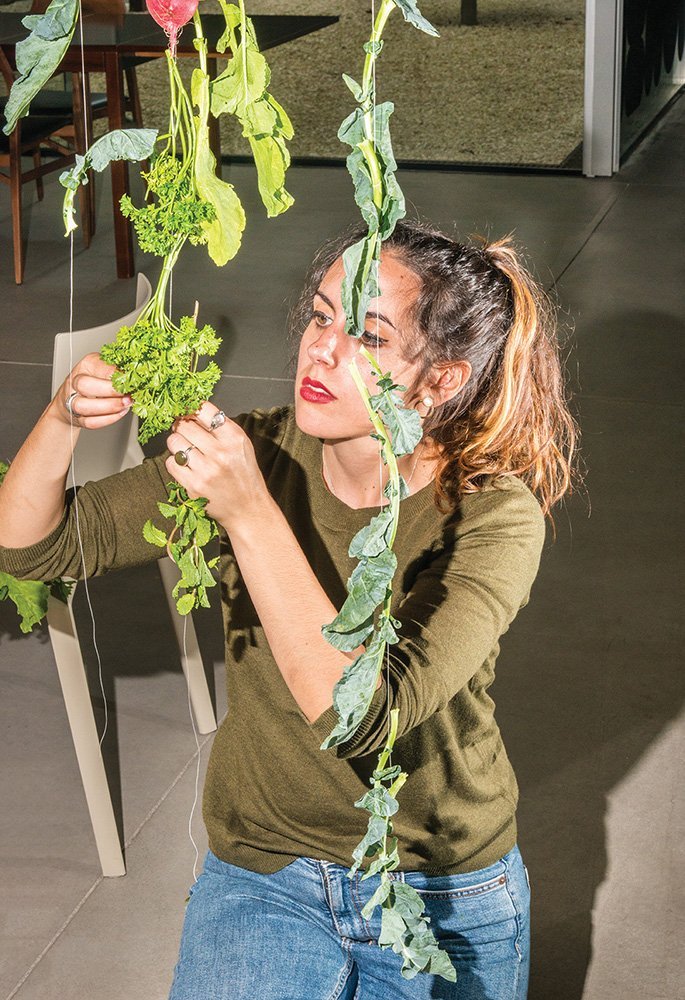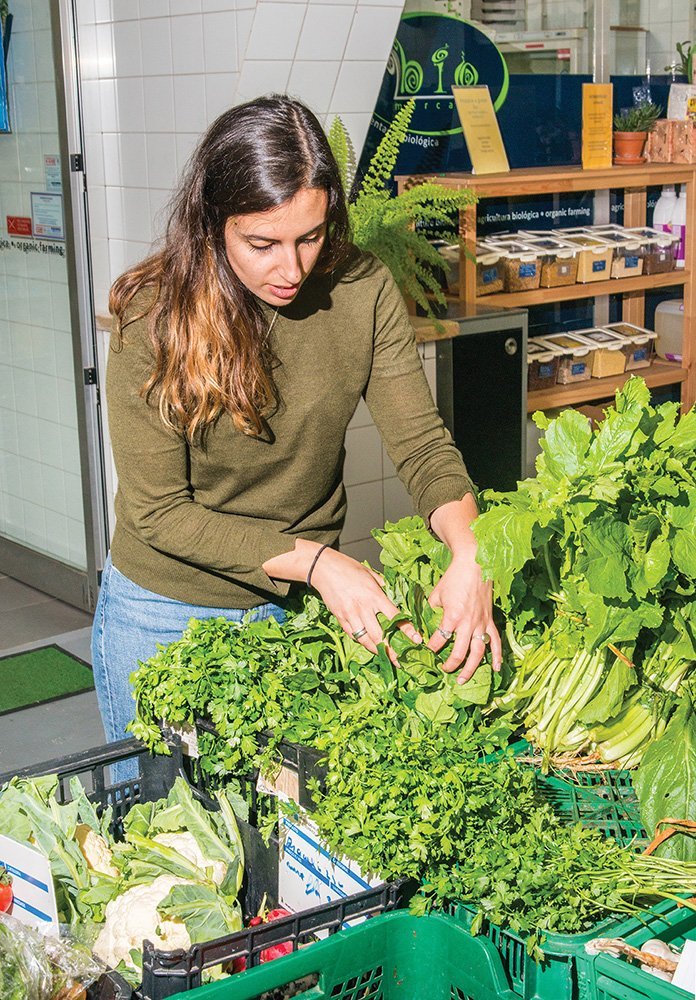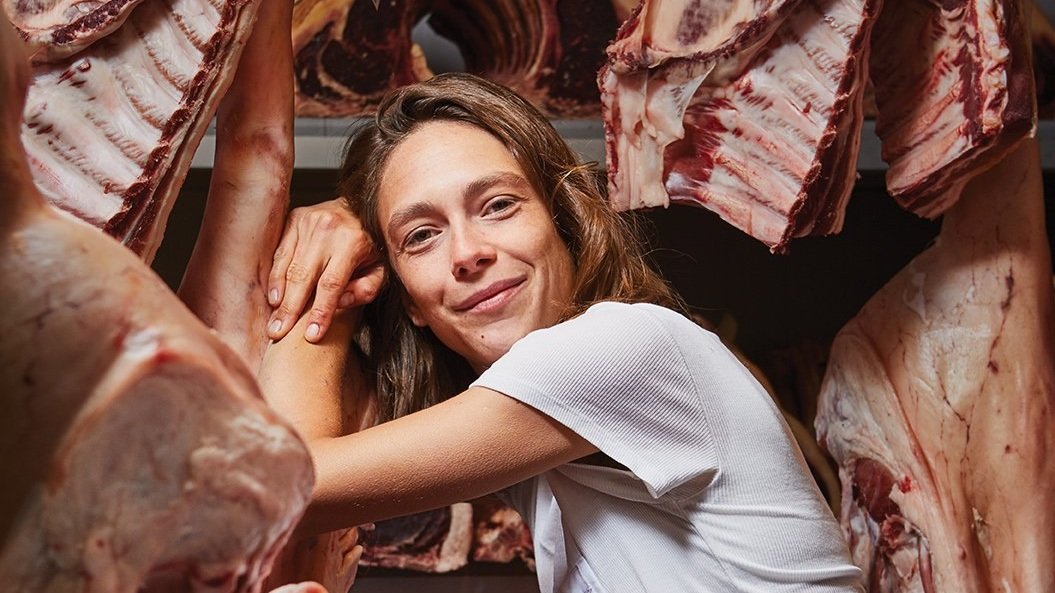Not Only Can You Touch This Artwork, You Can Eat It Too
Text by Philippa Snow
Photography © Alexander Coggin
When you sit down to a meal, perhaps in a restaurant or with members of your family, have you ever considered that you’re engaging in an age-old social ritual? The implements you pick up and use, or the order in which you consume the items that have been carefully choreographed on your plate? There’s more: The timings; The savory followed by the sweet, then something a little bitter to round off the experience; The conversational currents that pass across the table. These actions are so ingrained in our subconscious that they have become part of our muscle memory—unthinking movements and actions that just blend into our lives.
Inês Neto dos Santos is a multidisciplinary artist who was born in Lisbon, is now based in London, and travels across the globe with her fascinating and unique project. She first came to notice as the creative driving force behind Mesa, a supper club in which she collaborates with a visual artist to build a food experience which also channels the spirit of the artist’s work. Another recent project was called Tender Touches – a live, fully-functioning installation that existed as a cafe for six weeks. It involved a group of ten artists who created all the elements of the cafe, and Ines would run it and devise menus and create performances.
This delicate fusion of gastronomy and high art has taken Neto dos Santos in various new directions, as she uses this notion of food as an artist’s material to explore themes of sustainability, environmentalism, global trade and political history. Her work can take the form of a meal, or an open exhibition, or an installation, but the form almost always results in the spectator being able to interact or—in most cases—consume the work.
We meet her days out from a performative dinner she’s hosting as part of the Porto Design Biennale. It’s been commissioned by the Papanak Foundation and the University of Vienna who are hosting a symposium on the future of design. It’s an edible performance which explores a fictional future world – or maybe not-so- fictional? – post-climate change. It deals with ideas of locality and seasonality and local economies and what it means to employ a low impact manner of consumption while living in an increasingly fragile world. She collaborated with a writer named Anna Souter to create a narrative thread for the performance.
Sandwich: Why are we in a market?
Inês Neto dos Santos: I have come to this market which supplies produce for most of Porto. I have an idea of what I wanted to use for the performance. I also wanted to see what was available by speaking to people in the market and to collect a few ingredients to use in the creation of my installation over the next few days. Yesterday I tested out a few things. I also wanted to get a sense of the season and what the food will look like. We’re right at the end of summer and the beginning of autumn, so everything has a specific look and feel linked to time and place.
“The dinner itself is as much about what we don’t eat as it was about what we do eat.”
Can you tell us a little about the performance you’re devising?
The concept and the themes of the performance involve talking about the future post-climate change. I put this question into the hands of the audience. I will say a few words at the beginning which explains that this performance is happening in the future—or in the context of a future view of the world. The future could be tomorrow, or could be 10, 50 years time— it’s up to each person to decide. With that in mind, I only use produce that has been grown locally and very close to the market. Things that are seasonal and things that, through my research, I discovered to have a low environmental impact, or things that really make us think about what we eat.
The dinner itself is as much about what we don’t eat as it was about what we do eat. I want to be explicit about the ingredients I’m not using. For example, rice is something that has a negative environmental impact, but it doesn’t really get talked about. It releases an extraordinary amount of methane into the atmosphere—almost as much as cattle. But we don’t talk about it all. And Portugal is the second largest consumer of rice
in Europe. The market trip was the conscious selection of local and seasonal items. I talk to the sellers who are often farmers themselves and find out specifically where their produce came from. We will head to the performance space where we will start to measure things and work out how people can move in the space.
You use a technique where you hang vegetables from string like a mobile in a lot of your work. What is the function of this?
The hanging element is a technique I’ve used in previous performances, and in a way it ties a lot of my work together. The idea behind this is to create a gateway or a portal for the audience to pass through. It’s a symbolic way of entering into the future world of this new reality I’m proposing. And this hanging structure is built all the way around the table, so each diner is enclosed and surrounded by these vegetables that were sourced from the market.
You describe yourself as a multi-disciplinary artist, but looking at the performance aspect of your work, do you ever see yourself as a theater director?
I’ve never really thought that to be honest. There is a level of theater to what I do, I suppose. I see it more through a lens of performance, installation and experience.
Are you interested in the live experience aspect of eating?
Yes, I am for sure. I generally don’t talk about theater when I discuss my work, but I guess that I see it through the lens of performance. Working with food and working with something that’s so ephemeral has a lot to do with experiencing something that exists in a moment and that people see and take with them in one way or another. Quite literally in the work that I do—inside of them. This idea of eating as theater raises so many questions about the work: what’s the longevity of it?; How does it get documented?; How does it exist post- performance? I’m definitely interested in all of those questions.
Your work rejects the notion of the artist creating a physical object that can enter into the capitalist system. Would it be true to say that your work with food is not as monetizable in that respect?
Yes, definitely. It doesn’t lend itself to objects or things you’d keep and sell. In terms of surviving as an artist, this has its good and bad sides. But this is a conscious choice. I often think about how my work could exist for a longer period of time, versus capitalizing on something I think, in the context of my practice, is the opposite of what I’m trying to say and do by working with food and exploring concepts of sustainably. I’m very interested in the idea that audiences are part of the work, and that the work democratizes the artistic process. That’s why I want to work with food: it’s as much mine as it is yours. I want to share it. I put something on the table. But once I move my hand away, I lose control. I want to explore what it means and how different places and different people bring different reactions to the work.
Are you always present when your art is being eaten?
Most of the time. There are occasions where I haven’t been, where I’ve contributed to something for an exhibition and I haven’t been able to attend. I always like to be there. The work that I do is connected to conversations and dialogue. I often like to be involved in these, as they usually then feed back into my work. It feels important to be there and witness it happening. And, in a way, to make it happen. There’s a moment where I cede control to the audience.
Do you learn things from audience reactions?
All the time. It’s often generated really interesting conversations. And reactions that make me question why I put my work out there and what it means to people. It helps me to define what it means to be an artist working with food.
Having worked with food for so long, and in a very particular way, what have you learned about it as a material for creating art?
’m not sure I can pick out food items that work better than others. Yes, I see food as a material. I’m quite flexible with it. I tend to see metaphors in certain ingredients. And there are also metaphorical depths to ways of cooking or presenting food. There’s a big part of my work that has to do with research and the history of ingredients, what they mean and how they’ve been used. Research also goes into experimenting and getting to know the plasticity of food. I don’t know if there are some things that work better than others. There are certainly ways of manipulating food that I keep going back to. I work a lot with fermentation, which again for me is full of metaphors, in terms of collaboration and community and life in general. It’s just a super rich way of transforming food in terms of its meaning.
Are you ever informed by personal taste?
Yes, of course. Sometimes I’ll use ingredients that are just nice things to eat. Working with food in certain contexts, there isn’t an expectation that it will taste good and it will give you a satisfying experience. But there is a focus on taste and making sure these performances work out.
So by exploring taste and flavor, you are trying to give the people interacting with your art a positive experience?
There was this performance dinner that I created in Porto which was an experience in a particular neighborhood. Towards the end, we had this moment where the diners were expecting dessert. I created this suspended gelatine sculpture piece which captured the idea of walking through a garden, and it was shaped like the letter ‘E’. There was a wave of disappointment at first, but then it became a talking point and then blossomed into this really interesting conversation about the nature of expectation. So, on the one hand, I think there is an intention for people enjoying the food and focusing their senses on the things that are good and surprising and satisfying about it. And on the other hand, there are also elements which challenge ideas of what it means to eat, and eat together and eat things in certain set orders.
“Food is an ephemeral thing that’s either eaten or left to rot—either way, it transforms.”
You avoid using any processed foods in your art. Why?
There’s a variety of reasons for that. First, for me, working more directly with products that are raw and fresh, I know where they’ve come from and I know what they are, and they offer a clearer starting point. I suppose it has to do with an interest in the environment and health and how we relate to food. I think we’ve been very detached from making food from scratch in recent times. If we understand the origins of food, that makes it easier to connect to our environment and where we are in the world. And if we know where we are, we can better understand where we’re going. There’s a level of environmental concern behind that decision.
Questions of sustainability, the environment and the ethics of food run through your work. Were you inspired by these things from a young age?
I’ve always been interested in this on some level. Particularly related to food. During my upbringing, the food we had at home was all very natural. I’d always have the experience of going to the market or the butchers with my mother to pick out things. I would bring food into my work and always think about things like waste. Food is an ephemeral thing that’s either eaten or left to rot—either way, it transforms. I thought a lot about the things that don’t get eaten. For this reason, I researched fermentation and ways to preserve food and give it longevity. And while doing that, environmental concerns resurfaced and permeated my work.
You produced a piece called ‘European Map of Post-Brexit Luxuries’ about Brexit and its ramifications for food. Are you often thinking about specific global events when you’re designing your performances?
I’m often inspired by specific events which have a global impact. That idea of relating to Brexit is an example of that. Food is a political tool. It’s always political whether you recognize it or not. So these things are always there. Yet sometimes I’m clearly stating it and other times I’m not. There’s always a level of choice I have in terms of how far each piece is directly politicized. Sometimes it is specific events, other times it’s more of an understanding of the system that we live in and the choices that we make. It’s about engaging in practices in our everyday life that give us a chance to choose and to speak our minds.














